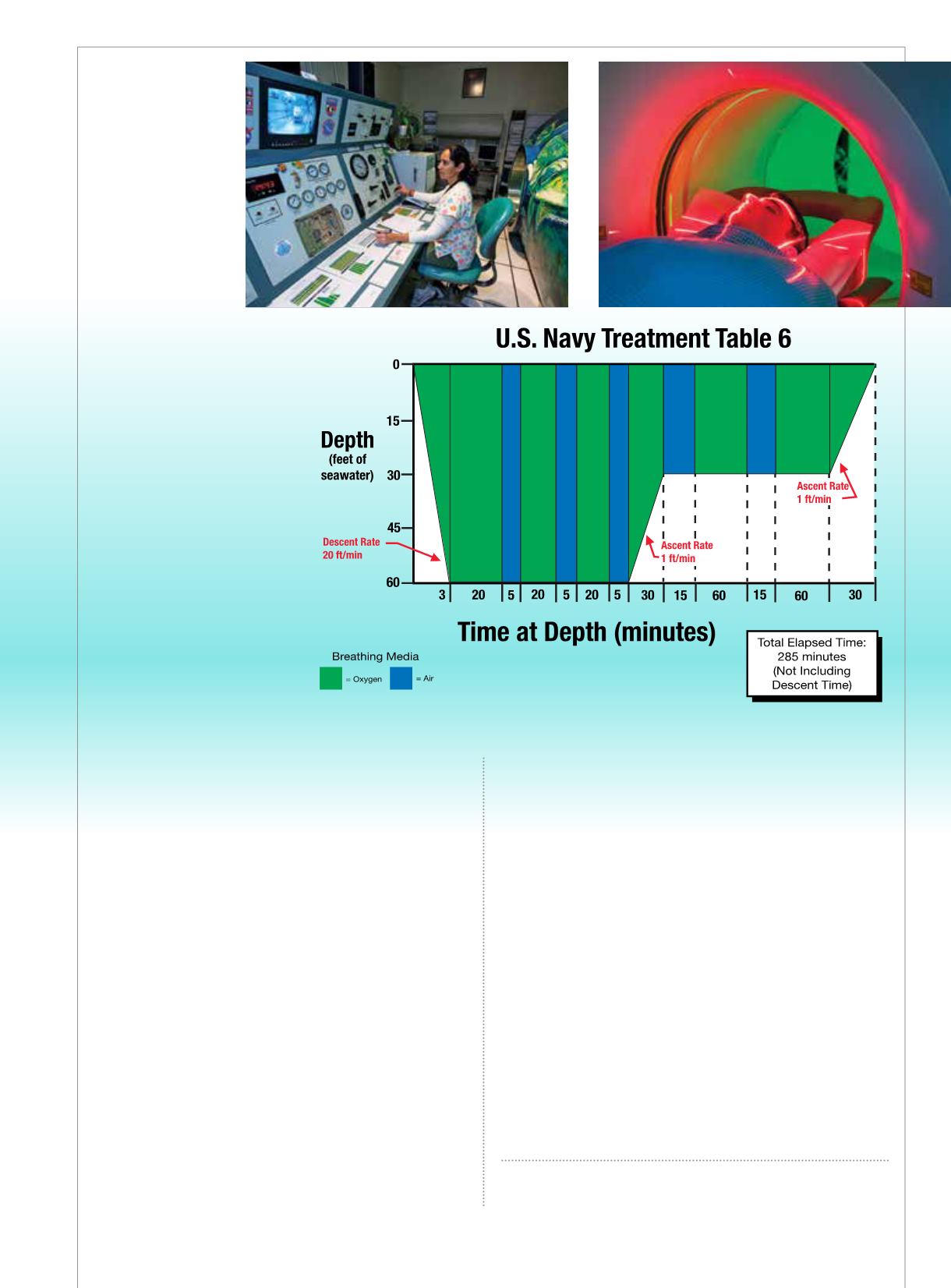
While bubbles in the blood
certainly play a key role in
the development of DCS,
their presence or absence
doesn’t reliably predict DCS
symptom onset. Investigating
this process at the molecular
level may teach us a great deal
more about DCS, providing
insights that we hope will
improve the effectiveness
of both prevention and
treatment.
Fortunately, DCS occurs
infrequently. Based on data
DAN gathered through Project Dive Exploration, the
overall incidence of DCS is two to four cases per 10,000
dives. This incidence rate drops to zero to two cases per
10,000 dives from warm-water resorts and liveaboards
and rises to 10-12 cases per 10,000 dives in sample
populations of deep technical dives in northern Scotland.
Treatment
Hyperbaric oxygen (HBO) is the definitive treatment for
DCS and AGE. Prior to definitive care, breathing 100
percent oxygen can expedite inert-gas washout, reduce
symptom severity and enhance treatment effectiveness.
The most common and accepted initial chamber
treatment protocol is the U.S. Navy Treatment Table
6. Depending on patient status, these treatments
may be extended or repeated. DCI is treated with
equal effectiveness in both monoplace and multiplace
chambers. Monoplace chambers treat one person at a
time, and patients are unaccompanied by medical staff.
Multiplace chambers enable the simultaneous treatment
of multiple patients and medical staff accompaniment,
which is important for seriously injured people.
Evacuation
Dive accidents can be frightening, and once DCI is
suspected, many divers fail to consider alternative
explanations for the symptoms. To ensure that
other severe injuries, illnesses and conditions are
considered, DAN recommends that injured divers
seek medical evaluation at the nearest hospital or
medical clinic. If DCI is indeed the diagnosis, the staff
and, if necessary, DAN can initiate a timely transfer
to an appropriate and available hyperbaric facility.
Dive accidents prompt many questions. After you
have contacted local emergency medical services,
contact the DAN Emergency Hotline at +1-919-684-
9111, or encourage the treating facility to do so. DAN
can provide pertinent medical information as well as
assist with planning and coordinating an evacuation.
AD
|
91
reference
1. Denoble PJ, Caruso JL, et al. Common
causes of open-circuit recreational diving
fatalities. UHMS 2008; 35(6): 393-406.
A chamber operator
carefully monitors
the patient, the
pressure, the gas
and the time as she
administers hyper-
baric treatment.
Right: CT scans
of the head are
often part of the
initial evaluation for
patients exhibiting
symptoms of AGE.
Ruling out intra-
cranial bleeds and
blood clots takes
precedence over
treating DCI.
ISTOCKPHOTO.COM
STEPHEN FRINK


